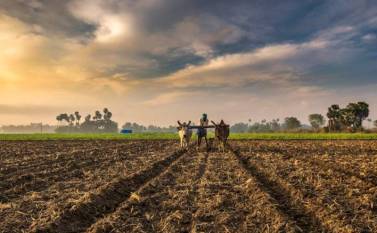Farmers shift crops as climate change slashes yields in Uttarakhand
DEHRADUN, 4 May 2025: Hill agriculture in Uttarakhand is undergoing a dramatic transformation, as pulses and spices emerge as the new backbone of farming in the region.
A new report has found that traditional crops like wheat, paddy, and potatoes are rapidly losing ground due to the growing impacts of climate change.
The analysis, titled Water and Heat Stress in the Hills, by the policy research group Climate Trends, reveals a 27.2?ll in total cultivated land and a 15.2% drop in crop yield across the state over the last decade. The most severe impact has been recorded in food grains and oilseeds, which have lost over 27% of their cropland in hill districts.
Wheat, Paddy Decline as Pulses Gain Ground
Wheat cultivation in Uttarakhand has declined by 4.63%, with similar trends observed in paddy and other millets. In contrast, pulses like chickpea and pigeon pea, and spices such as turmeric and chilli, are being cultivated over larger areas and showing improved yields.
“Pulses, particularly black soybeans and horse gram, are proving more resilient to the current climatic stress,” said Jogendra Bisht, President of the Lok Chetna Manch. “They need less water and fewer inputs than wheat or paddy.”
GI-tagged hill crops such as pahadi toor, gahat, kala bhatt, and chana are gaining renewed attention from farmers and policy planners alike.
Spice Cultivation Sees a Boom
The report highlights a 50% increase in spice cultivation across the state, with turmeric cultivation more than doubling and chilli production rising by 35% in the last ten years. Between 2016 and 2022, overall spice yields improved by 10.5%.
Potato Output Crashes by Over 70%
Potato, once a key hill crop, has seen a drastic 70.8?ll in production—from over 367,000 metric tonnes in 2020-21 to just above 107,000 metric tonnes in 2023-24. Almora and Rudraprayag districts were the worst affected.
The area under potato cultivation shrank by more than a third. Experts blame reduced snowfall, erratic rainfall, and rising temperatures for the steep decline. “Potatoes in these areas are completely rain-fed,” said Dr Anil Kumar of Krishi Vigyan Kendra, Udham Singh Nagar. “Erratic rain and reduced winter snowfall have drastically affected soil moisture.”
Extreme Weather Accelerating Change
According to India’s Atlas on Weather Disasters, Uttarakhand recorded 94 extreme weather days in 2023 alone, damaging nearly 45,000 hectares of farmland.
With traditional crops becoming increasingly unsustainable, farmers, supported by Krishi Vigyan Kendras, are adopting drought-tolerant varieties. The shift toward crops that can withstand long dry spells—such as pigeon pea and chickpea—is now seen as critical for protecting livelihoods.
“Farmers are adapting quickly,” said a senior agriculture officer. “The shift to climate-resilient crops is not just a choice anymore, it’s a necessity.”
Image credit: LinkedIn




















